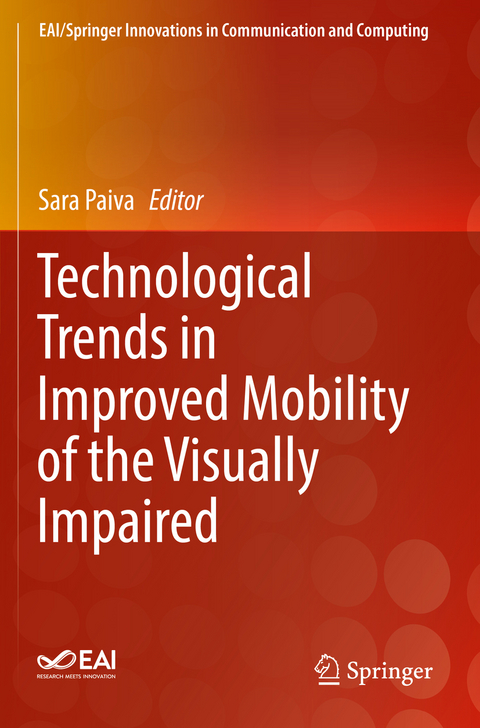
Technological Trends in Improved Mobility of the Visually Impaired
Springer International Publishing (Verlag)
978-3-030-16452-2 (ISBN)
- Features practical, tested applications of technological mobility solutions for visual impaired people;
- Presents topics such as obstacle detection systems, urban mobility, smart home services, and ambient assisted living;
- Includes a number of application examples in education, health, electronics, tourism, and transportation.
Sara Paiva is an Associate Professor at the Polytechnic Institute of Viana do Castelo, a PhD in Informatics Engineering from University of Vigo and a postdoctoral researcher at the University of Oviedo since January 2018, under advanced driving assistants and urban mobility. Sara Paiva coordinates ARC4DigiT, the Applied Research Center for Digital Transformation, created in january 2018.. Her main line of research is mobility solutions in urban environments applied to citizens in general and/or to the promotion of social inclusion. She is frequent book editor of Springer and IGI books, has more than 30 publications in international journals and conferences, is a frequent reviewer of journals and international conferences and has supervised several final projects of Bachelor and Master in her main line of work.
Chapter1: Smart Cities to Improve Mobility and Quality of Life of the Visually Impaired.- Chapter2: A Survey on Accessible Context-Aware Systems.- Chapter3: Smart systems to improve the mobility of people with visual impairment through IoM and IoMT.- Chapter4: Comprehensive Literature Reviews on Ground Plane Checking for the Visually Impaired.- Chapter5: Technologies and Systems to Improve Mobility of Visually Impaired People: A State of the Art.- Chapter6: Cloud Video Guidance as "Deus ex Machina" for the Visually Impaired.- Chapter7: Virtual Vision Architecture for VIP in Ubiquitous Computing.- Chapter8: Intelligent Vision Impaired Indoor Navigation using Visible Light Communication.- Chapter9: AmIE: An Ambient Intelligent Environment for Blind and Visually Impaired People.- Chapter10: Digital Enhancement of Cultural Experience and Accessibility for the Visually Impaired.- Chapter11: Towards sustainable domestication of smart IoTmobility solutions for the visually impaired persons in Africa.- Chapter12: Large-scale Interactive Environments for Mobility Training and Experience Sharing of Blind Children.- Chapter13: HapAR: Handy Intelligent Multimodal Haptic and Audio Based Mobile AR Navigation for visually impaired.- Chapter14: A Context-Aware Voice Operated Mobile Guidance System for Visually Impaired Persons.- Chapter15: Modelling the Creation of Verbal Indoor Route Descriptions for Visually Impaired Travellers.- Chapter16: An Aid System for Autonomous Mobility of Visually Impaired People on the Historical City Walls in Lucca, Italy.
| Erscheinungsdatum | 30.07.2020 |
|---|---|
| Reihe/Serie | EAI/Springer Innovations in Communication and Computing |
| Zusatzinfo | VIII, 424 p. 193 illus., 148 illus. in color. |
| Verlagsort | Cham |
| Sprache | englisch |
| Maße | 155 x 235 mm |
| Gewicht | 650 g |
| Themenwelt | Medizin / Pharmazie ► Physiotherapie / Ergotherapie ► Orthopädie |
| Technik | |
| Schlagworte | Aid systems for visually impaired people • Ambient assisted living for visually impaired peop • Ambient assisted living for visually impaired people • Indoor navigation for visually impaired people • Obstacle detection systems for visually impaired p • Obstacle detection systems for visually impaired people • Outdoor navigation for visually impaired people • Transport sustainability for visually impaired peo • Transport sustainability for visually impaired people • Urban mobility for visually impaired people • visually impaired people |
| ISBN-10 | 3-030-16452-7 / 3030164527 |
| ISBN-13 | 978-3-030-16452-2 / 9783030164522 |
| Zustand | Neuware |
| Haben Sie eine Frage zum Produkt? |
aus dem Bereich


